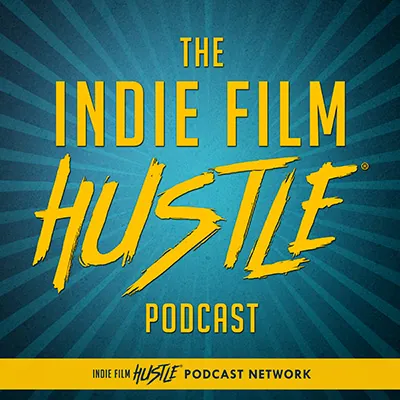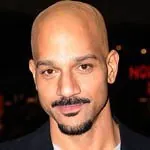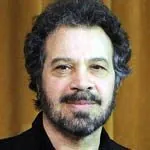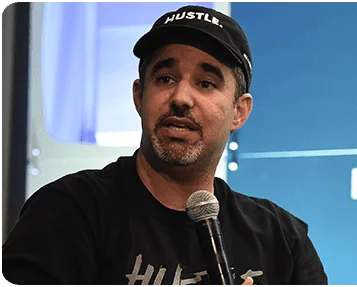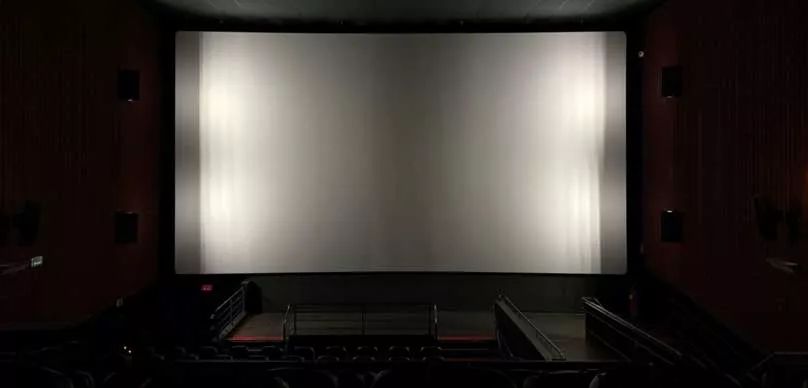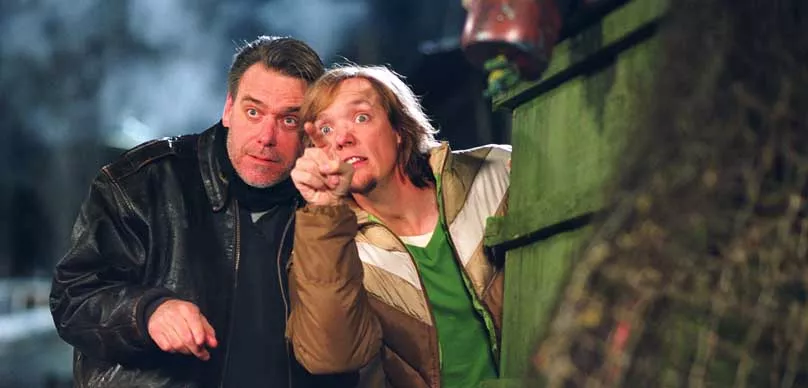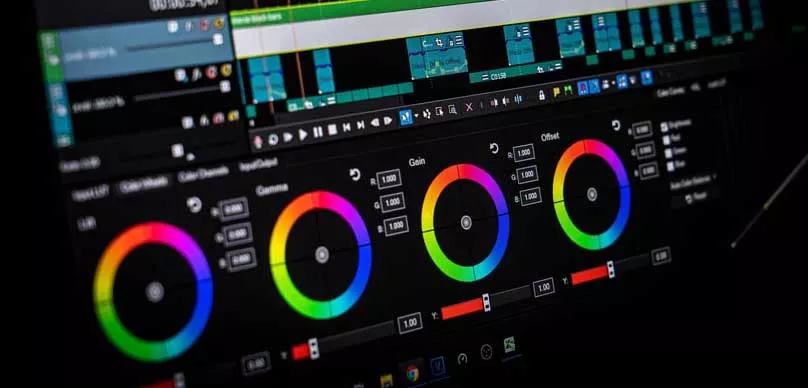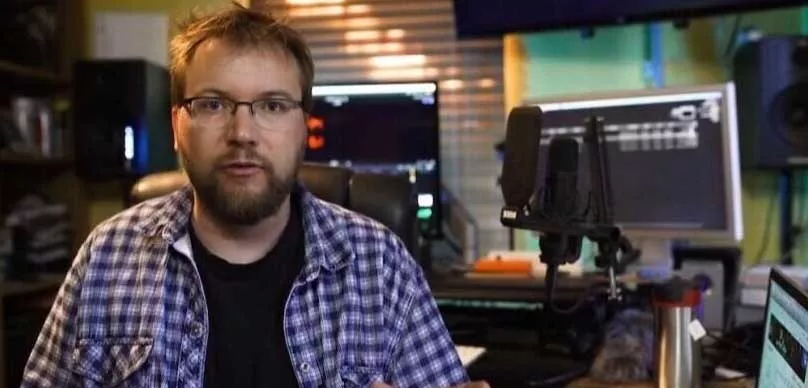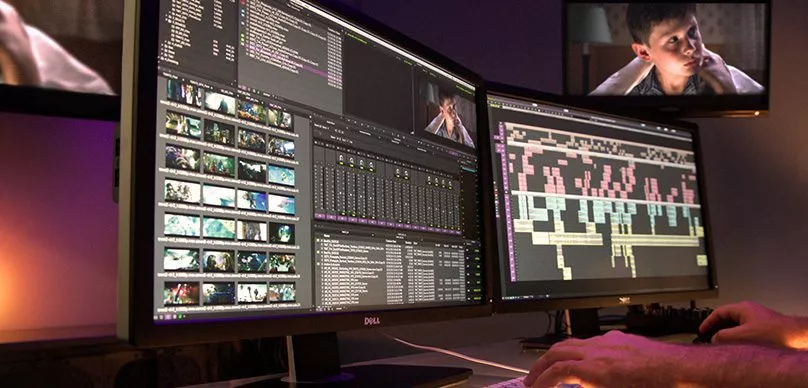Filmmaking is a long process and is divided into three stages. The first stage is pre-production stage, the second one is production, and the last one is the post-production stage. In this podcast episode, I go into each of the following steps of the post-production process and add a few bonus ones as well.
Pre-Production Stage:
Pre-production in real is not much difficult. This process starts when the producer of the film select the cast and the crew of your film, and you develop your final script. It is a filmmaker who is trying to convince the people that the shooting will start soon. After that announcement, the producer will wait for the cast to agree to do the work and for the financial partners to fill the banks of the producer.
The Production Stage:
After getting your finances, the production process will get started. This production phase will have all kinds of action. You will get started with a tight schedule of nine to eighteen days, working for 14-18 hours in a day. All the activities are carried out at once. The light, camera, action, actors, scripts, costumes, props, schedules and most importantly the temper tantrums due to the long and hectic schedules. Apart from all this, production is somewhat a fun process if you get what you want quickly but if the case is opposite, these days can turn into nightmares for you.
Whether these days are joyful or tiring, the end of the production phase always comes with a party. Everyone in the cast and the whole team will party hard at the end and will go to their homes. Their work is done. In the end, you, the producer is left with all the work. You may wake up after approximately two days because of the continuous hectic routine you followed in the last days.
After that, you will have a whole tape of the film which can be twenty hours long, and then the next stage will be the post-production stage.
The Post-Production Phase:
What is post-production? Post-production is not a difficult process. There will be no hectic schedule of working for 14 -18 hours like the production process which includes a lot of work. The first thing to do after the production process is complete is to call your cinematographer so that he can introduce you to different editors. All you have to do next is to hire some good people and keep an eye on their workday for an hour or so. The production process will be easy for you if you follow it step by step. Here are the 13 steps of post-production process which are to be followed by every producer.
The 13 steps of post-production process are as follows:
Post Production Process: The Selection of Editing Software:
The first step to follow in post-production is to select an editing program. Selecting your editing application can make your workflow run smoothly or cost you months and tons of cash. You can make that decision based on the needs of your creative editor and the original format you shot your film on. You’ll need to find a balance between the two.
Please consult with a Post Production Supervisor at this stage of production. They can save you a ton of time and cash.
Post Production Process: Selection of a Creative Picture Editor:
The selection of an expert editor for your film is the biggest decision. The proper formation of your film depends on the creativity of your film editor. The editor is the one who will develop the Edit Decision List (EDL). He will go through all of the scripts and the scenes of your movie and decide which shots will be used to create a flow of the story correctly. Here comes the big work of the editor’s creativity.
The best way is to hire an appropriate editor for your film before the start of the production phase. The benefit of having your editor in the production process is that he will guide you about the scenes which are required to make a perfect sequence. The editing of the film is about 8-10 weeks long procedure, and it will involve different stages. The first edited draft is called Rough cut, and the final draft is called an Answer point. A good edit has two ends; the first one is when you are satisfied with all the visual images and the second one is when you are happy with the sound effects of the film.
If you want to learn the creative art of being an editor you need to watch the videos below.
Post Production Process: Selection of a Sound Editor:
After the preparation of the edited movie, there is a need to improve the sound quality. For that purpose, you have to hire a sound editor who can make the movie look more attractive with different sound effects.
The sound editor will perform some major tasks like he will cut the dialogue tracks and recreate those sound effects and then make the cue sheet for another step in the post-production process i.e. the mix.
Post Production Process: Automatic Dialogue Replacement:
This step is carried out in a big room with the projectors. The central focus of this ADR is to replace the dialogues in the film which are not adequately recorded. All the actors again deliver These dialogues, and the voice is then synced to the edited version of the movie.
Post Production Process: Work with Foley Artists:
Making the sounds of the dialogue clear is not the end of the audio editing process. You have to go again in the ADR room, and with the help of the hired Foley artists, you will include the additional sounds in the edited version of the movie. These sounds will add the sounds of footsteps and others. The sound people are called Foley artists.
Post Production Process: Music:
The next step for the post-production process is to include the desired music in the film. The best thing is to hire a musician with his studio so that he can create new music for your film. Producers never use the previously used music in a movie as it is against the laws. If you have already bought the rights to use that old music than you can add to your movie.
Producers never prefer the usage of pre-cleared CD music because of its low quality. It is better to use a contemporary type of music in your film because the usage of traditional and public domain music will be hazardous.
Post Production Process: The Mix:
The mix or the re-recording section of the movie will include the setting of the sounds in the whole movie in a row where they fit. After all of the above steps, you will have a series of music that will include the songs, the background sounds, etc. All you have to do is manage these sounds effectively in the whole film.
Post Production Process: Music and Effects (M&E):
This is a part of the film production that you have to sell the rights of your movie to the foreign nation. There is a requirement of the international buyers that they need the soundtrack which is free from the English dialogues so that they can dub the dialogues in the desired manner. So, it is better to get the only music and effect version of your film.
Post Production Process: Creating Your Opening and End Credits
After the formatting and the finalization of the sound effects and track, you have to finalize your titles for the movie. The producer has to get the 6 – 8 opening cards of the title and finally the Rear title crawl. These title files are then added to the final tracks.
Post Production Process: Digital Cinema Package:
For the final print of your film to be delivered to the cinemas, you need your digital cinema package or DCP. It will contain the final edited film in a hard drive. This hard drive will be used for the distribution of the movies into the theaters. Click here for more on DCP (Digital Cinema Package).
Post Production Process: A Dialogue Script:
A film without subtitles in a foreign country is of no use. You have to create a dialogue script for the foreign people so that they can create the subtitles accordingly. This dialogue script will contain the codes for each and every pause and the dialogues so that the subtitles can be created by the scene and the actual dialogue.
Post Production Process: Campaign Image for the Film:
Getting an appropriate campaign image for your film is imperative. The picture of the film should depict the storyline of the movie and should include the name and the credits for the films. This image will create a first impression on the distributors and the programmers of the movie.
Post Production Process: Trailer:
The last step in the post-production process is getting a perfect trailer for your film. The trailer should be 90-120 seconds long. It should have the ability to deliver the moods and atmosphere of the movie. The success of the movie will depend on the strength of the trailer. This is all you need to know about the post-production process of filmmaking. If it is followed appropriately, the film will get a good reception.
If you want to learn how to edit a trailer for Hollywood Trailer editors click here!
If you need help with understanding post-production workflow or need to consult a professional post supervisor click here.
Right-click here to download the MP3
Alex Ferrari 2:20
So guys, today's episode is something that's very near and dear to my heart postproduction where I've been making my bones for the last 20 odd years working on God 1000s of different projects over the course of my career and probably over 50 or 60 features easily over 100 150 indie film projects either shorts and or features documentaries and so on. So I've got a lot of experience working in the in the post production field and I wanted to come up with a podcast that kind of talked about the steps of post production because there's a lot of confusion A lot of people don't understand the basic understanding of what post production not workflow but just the steps that are taken in post production and a couple of tips I'm going to throw at you during this this list these 13 steps is going to help you with workflow which is so so massive and there's another episode I did on post production workflow called post production workflow understand it or die which is Episode 14 you can download that one at indie film hustle.com Ford slash zero 14 and that's a really good episode a very very popular episode as well. So let's get into it guys so step one selecting the editing software they're going to be using to edit your movie a lot of people just you know grab whatever they have access to and not think about things going down the line so a lot of people like well have access to an avid or have access to a premiere or I have access to Final Cut seven or Final Cut x or god forbid sony vegas I'm sorry if anyone's anything out there in sony vegas land Stop joking joking but no really stop it's it's hurting yourself and people around you. But anyway. So by making that choice is very, very integral because depending on the format you shooting on so if you've shot on Alexa, you shot on a DSLR you shot on a red and so on. There's different workflows that you're gonna have to understand. So picking that software is going to be very crucial to you and I know a lot of times creative editors, especially older creative editors, or more established creative editors will work with avid and which is great avid is the industry leading piece of software. But sometimes avid does not work really well with anything other than edits going down the line working with red or working with specifically red. I'm in the middle of a project right now we're having issues, reconnecting certain things and you know, just things get wonky. I'm not sure as much of that might be the problem with read or maybe with avid, but I know that premiere is much more table in that world, no final cut is. And I know DaVinci Resolve handles it wonderfully. And I'm a big, big, big fan of editing in DaVinci. As everybody who listens to this podcast, no, I edited didn't I edit. This is Meg, completely 100% individually. But anyway, picking that is very, very important. So understand that you will have to pick something that's going to, that's going to work with your workflow going down the line, whatever that workflow might be. But make sure you're very cautious about what you're editing on, and it's going to be able to achieve what you need. Second is selecting an editor, someone who understands story understand what they're going to be doing. And then that will also determine what sort of what software you're gonna be using. Because the editor generally speaks, generally speaking, uses the software that they're most comfortable with. But choosing that editor is such an important person, it's such an important job in the post production process. Because you can find editors that are creative editors only who just going to be doing the creative, which is generally speaking what most people do. Occasionally, you will find a creative editor who happens to understand the technical aspects of things which are really, really beneficial if you can find someone like that. But as again, generally speaking, you're going to mostly find just creative editors, who are going to be able to do creatively what you need to have happen with your movie. So picking that person is very, very, very important. Now the next part of the post production process would be selecting a sound editor, someone who's going to be able to once as much even a sound editor as a sound house, someone, either a house of post production company, an audio post production company, or a person who's going to be able to do all the aspects of what is needed in audio post production. Now I've worked with guys who do everything in their house, and they're a one man band, and they can literally do everything I've found I found that guys that do everything like that in their house, they're really not capable of giving you everything that you're you need unless they have a Foley stage and a full ADR suite and all this kind of stuff. Is it possible, yes. But generally speaking, I would go with a post production house of some sort. And there's many out there who will work on a low budget world that I know of the guys work over at monkey land audio here in Burbank. They definitely work with low budgets and work with independent filmmakers and are indie friendly. Again, I'm not, I'm not doing this as a marketing campaign for them. But they're just there's many other ones in LA, that do that as well. But, but definitely, finding a sound editor someone or sound post production house is going to be able to get you all the sound elements that you're going to need and deliverables, you're gonna need to make your movie move forward. The next step is ADR. So I'm gonna explain to you what ADR is automatic dialogue replacement, which basically means that if you record something on the day on location, and there happens to be a plane flying by that that's not going to be usable in the final mix of your movie. So you're going to need someone to go in, you're going to need the actors to come into into an ADR session, which they'll put up the picture up on a screen. And then at that point, the actor will mouth the same lines that he or she had on the day, and replace that audio cleanly. Now, I'm not a huge fan of ADR, I actually hate ADR because I feel that it never matches exactly the way the energy was of the day, or the vibrance of the performance of the day. So I really like on mag, we I think had two lines of ADR and it was mostly grunts, and like, kind of stuff. It was not like full blown dialogue. So I kind of ran with it. And of course, a movie like mag made sense to do something like that, because it was very kind of raw and naturalistic, but it is something that you will have to do I have had to do ADR and other other movies have on other projects of mine. So definitely keep that in mind that you will need to do that. Another thing you're going to need to is finding a place that does Foley Foley is basically somebody going out and making all the sound for every little movement that happens in the movie. So obviously, when you're recording someone running down the street, and there are two plsa, two people walking down the street and they're talking Well, your focus on the day is to record the dialogue that the people the actors talking, you're not focused on recording the footsteps, or the wind blowing, or the tree that they kind of ran the bush they ran into or anything like that that's what Foley's for, and you have to find a studio that has a full Foley stage. In that Foley stage they have. They're so awesome. These places it's like basically a junkyard of a million different sounds, things that can make sound. They have floors, where if you lift up 111 part of the floor you got sand, gravel, water, wet, dry, it's for sand. It's awesome. It's really, really awesome. But you need A studio that can handle that that's why I'm saying a lot of times these one man bands can't do that now could you replace those sounds instead of Foley with canned sound effects like Can people walking when I say can means that there's someone else's recorded generic footstep somewhere and then the the sound mixer sound designer can actually just replace your footsteps with those canned footsteps yes of course you can but it's never 100% sometimes it works wonderfully and again I'll use Meg as an example. We use a lot of sound effects in mags that were canned because they're perfectly fine You don't need to do a brand new Foley session for those but there were other things that were very specific like you know, when Meg is getting up out of bed and her she her sheets are kind of rubbing up against each other that kind of give give a little bit of a sound it's very difficult to find that in a sound design scenario in a in a canned in scenario you're gonna have to find you know, kind of foley artist to kind of match that exactly for it to sound right. So it's definitely something you have to keep an eye on but that is something else you will need and if for deliverables, you will need a full m&e track. This is a little bonus sidetrack but for deliverables, but an m&e track means music and effects. So when you try to sell this movie or your movie overseas, you will have only music and effects track and then they can replace their dialogue with foreign actors replacing the dialogue of your actors. But without that m&e track, they can't do that. So then you will not be able to sell your movie to other territories. So having a full fully laid out m&e track and if you go even fully more that you can actually spread that set, separate the music, and the effects. And then every single sound effect has to be created in a Foley session and or sound design session. And that's much, much more expensive and much more for higher end movies. But that's something else that you'd have to keep an eye on for your project. So speaking of music, that is our next step is music. Finding a composer to be able to bring music to life in your movie. Now it could be with a pre pre recorded music, existing music, or you hire an actual composer to compose original music for your movie, something that you will definitely need in about 99.9% of all movies will have some sort of music in it. So definitely hiring some hiring music composer is extremely important. Now my experience is working with music and doing all the movies I've done is generally speaking, you're always waiting for music at the end of the you know, the edits done, the colors done, the the mix is ready to sound houses waiting for music to do the final mix. So just stay on top of your composer to make sure those deadlines are hit when working with a composer and again, I'm being very general here guys, not all composers take time. But a lot of times you're also rushing the composer to create music based on timelines too, and they're doing the best job they can. But hiring that composer will bring life to your movie or putting in a pre recorded music or, or needle drop music as they say, which is stock music that you can easily get the rights to, you could do that as well. The next step is the mix. Now the mix is extremely important when mixing the audio, all the audio elements together. So a lot of times I've had this happen, the the sound, the sound guys have created sound effects for certain, let's say, you know, moments that need to be like accented. So, you know, I'll use the example of you know, a horror movie when someone you know, goes in and slices somebody like, you know, the axe murderer is coming in to slice something, the sound effect might be really big to just like really scare the hell out of the audience. Well, the composer might have had the same thought and created a big hit of music at that same moment. Well those two sounds are going to fight each other. So then that's where we have to kind of work around like okay, what do we want in the mix. And that's why it's so important. The mix is so so important because certain things you want to bring down lower certain things you want to bring up higher, depending on what kind of emotional reaction you're trying to get from the audience. Hitchcock was the master of this, he literally played his audience like a fiddle because he was able to just bring things in and out and he was able to do that with images as well. But as far as the mix is concerned, he would just pop things up just right at the right moment and bring it back down and that is why the mix is such an important part of it. So being in the room in a properly constructed room where you can hear a five one mix five one is a surround sound mix now they have seven one they have Atmos there's multiple different kinds of mixes that you can create and I was the next the next step is something I've already kind of spoken about which is music and effects, creating that m&e track very, very important going forward because you will not be able to sell your movie international Unless you have a full m&e track laid out, another step that you're going to be dealing with is titles, the the basic titles of the beginning basic critics at the end, rolling credits and so on. I have been involved with so many movies that have yet to once not one time and 70 odd movies that I've finished that the end credits or any of the credits were done in the first pass, they're always adding something, something's always misspelled, someone's changing their credit, like, Oh, I need to have this guy up above this other guy or this girl above this other girl, because of ego or because of contractual issues, and so on and so forth. But you will need to create these titles. So whoever is going to be doing your online, being your online editor, you will have to find, see if he'll be able to create those he or she will be able to create those opening credits, which either could do basic opening credit. Or you can do like, you know, seven style David Fincher seven style credits, which are much more elaborate, and a production in themselves. And then basic rolling credits. So you that's a conversation you have to have with your online editor. Now, as opposed to a creative editor, and I'll talk about this really briefly. Creative editors, they're literally just to be created, the online editor is the person who's going to put every thing together, that's going to put in the final edit, that's going to put in the color graded images, that's going to put the final mix, put in your titles, and get everything ready for your deliverables online editor is extremely, extremely important. And sometimes very overlooked by producers that like oh, my editor could just put it all together. And I cannot tell you how many times I've had movies come into my, into my office, that that just happened, Oh, I thought my editor was gonna be able to do it. And the editor had no idea creative editor had no idea technically what needed to be done, or they're moving on to another project. And they're being creative, and they're not worried about deliverables and titles and any of that crap. So very, very specific, you got to find a good online editor. And on another side note, guys, please, for God's sakes, talk to a post production supervisor. I mean, seriously, it's so upsetting. You could either talk to a post production supervisor, if you have the money, hire a post production supervisor, if not consult with one. So they can talk to you about workflow and making sure things are done right. If not, you might get stuck and lost in the pit that is post production. Unless you understand the roadmap that you need to take to get out of the forest. Sometimes I've seen people wander in that forest for months, if not years, trying to get their movies finished. But just a little conversation, a little consulting with a post production supervisor could save you 1000s upon 1000s and months upon months of time, so please keep that in mind. Another part of the the process is obviously color grading. So without a colorist color grading your movie, it's going to look like crap. And if you want to create high production value in your movie, you've got to get a color graded even if you want a simple basic color. Like I don't really need the color graded, I'm just going to do it myself in my avid or my should do it myself in Premiere Final Cut does something basic, I don't need anything really crazy. I don't want this to look like a Michael Bay movie. Well, even the basic stuff is hard to do. And you have to make sure everything evens out, seeing the scene and thematically everything works the same way. You know colors is very well needed. And if you don't use a colorist nowadays, you're not going to sell your movie, it's very difficult to do so without having some basic color. And I'm not talking about crazy stuff, I'm just talking about just getting everything built look even and nice and clean. Or you can create very, very cool looks as well. So next on the list is the DCP the digital cinema package as part of your deliverables. So now you've created your movie, your movie is edited, it's colored, has a final mix to it has your titles to it. Everything's ready to go now you create a DCP. Now a lot of people say you got to create a DCP right away. I disagree. This EP is basically a digital cinema package is only for theatrical exhibition. So if you're going to go to a big festival, then you might need a DCP depending if it's like a Sundance or trackback or any that big festival, they only exclusively will project in the DCP format. So you have to create one eventually, but don't spend the money until you need it. All right, please do not spend the money until you need it. Another part of the deliverables things a lot of people don't really pay a lot of attention to is a dialogue script. So a dialogue script is basically a script that just lays out all the dialogue of your movie. So that way you can send that dialogue script in. So people in foreign countries can create a subtitles or things like that, that they might need to sell your movie. So you need to create a dialogue script as well. Now you also another step guys a lot of people forget about is the campaign image of for your film. Now campaign image is basically a still and you're going to need multiple stills a lot of distributors are going to ask for 6070 stills. And this is something that a lot of people forget I even forgot about it in mag, I don't have a tremendous amount of behind the scenes stills. And when I say stills, I'm not talking about those cool behind the scenes stills of you and, and the camera and the crew shooting the scene. Those are great. And those are needed as well. I'm talking about the promo stills the campaign image, meaning that when a camera man is literally or some photographer standing right next to the camera man, taking an image of shot of the scene as is being recorded. And those are the scenes that they go out and help promote your movie, something you have to have, if you expect to sell to a distributor, or get those out there and it's helpful regardless. Now you'll see I know a lot of people like well I'm shooting in five or 6k, I could just pull it off the read. Or I could just pull it off the raw image of my you easily could do that as well, especially if you start shooting at the higher resolutions. That's a lot easier to do nowadays. But for the rest of us are not shooting at that super, super high resolution, it's helpful to have something more traditional by just shooting it with a high end iPhone, or shooting it with a professional or having a professional photographer shooting stills for you on set. And the second to last thing is so important. I can't even express to you how important this is. The trailer. The trailer is so so so important to your post production process to the process of selling your movie. Have I mentioned how important the trailer is. The reason why I laugh is because a lot of people forget about the trailer, they like oh, I'm just going to kind of just throw something together, you have to understand that the trailer is going to be seen by more people. At least 50 100 times more people will watch that trailer than will watch your movie. And it is going to be that is the biggest calling card for your movie is not the poster man anything is the trailer and today's social media world that everything is video video video, that trailer, you know I released Meg and within the first couple days we we got word downloaded almost 20,000 times or a little bit over 20,000 times throughout all of our platforms, which is pretty amazing for such a small little movie with you know, no major backing or major studio bind it. So it's just a small little film. And it's like oh, that's really really cool that was able to do that. But that trailers being seen and gain the interest. So keep it very take it very seriously about shooting or about editing a trailer, hire professional editor, trailer, trailer trailer editor, who understands how to sell movies, if you have the money, hire a trailer producer, and have them actually write a script for the trailer. Super, super, super important guys. And then the very last thing that's not on the list, but I thought I throw it in there is the website. Now I know this is not part of your post production process. But it is the process of selling your movie. So at the end of it, if you don't have a website, a real website for your movie, you're screwed. You need a website you need for everything to everybody to come to a website to help sell your product, to sell your movie to tell people where screenings are to show your trailer to show behind the scenes footage to connect to your Facebook and Twitter and Instagram and Pinterest and all the other platforms as well you need a hub. So creating a very cool website is very, very imperative, especially in today's world. Now you can go to many different places to create a website, you can create your own website by using different plugins on WordPress, multiple things like that, I have a whole course or I have a whole course but I have a whole article written about how to create a kick ass website. And I will leave that in the in the link in the show notes. Which of course the show notes will be at indie film, hustle, calm, forward slash 113. And I hope that's it guys, that's basically all the steps I went past 13 steps, I added a few other ones in there as well. But I wanted to kind of give everybody a brief under a brief overview of the post production process a lot of people and it's really quick guys, it's I can go into details about every aspect of what I talked about today. But it was just a very, you know, broad overview of the basic post production process. And you might have known a lot of it, you might have just found one or two that like I didn't know that I need to do that. I'm going to do a whole other thing about deliverables coming up in the months, weeks and months ahead. and a bunch of other stuff that I'm going to be tossing into the syndicate, doing some mini courses on post production workflow, post production, deliverables, and so on in the syndicate, which of course you can check out at indie film syndicate.com Now guys, I know it's the holiday season, and we are now officially in the holiday season. And I know you guys if you're listening to the show, hopefully your fans The show and you really love what we do at indie film, hustle. And I wanted to get in just kind of if you guys want to help us out, and you can't afford to buy any of our courses, or join the syndicate, or anything like that, there's a really easy way for you guys to support indie film, hustle, super, super easy way. And all you got to do is go to indie film, hustle, calm Ford slash Amazon. So if you guys are going to buy anything in the holiday season, on Amazon, or anything else like that, just head over to indie film, hustle.com Ford slash Amazon, and we get a small commission off anything you buy, and you guys get charged nothing for it, by the way, nothing, it's just a way for you to help support the show. So I really, really would help I really would be just completely grateful that if you guys are buying anything anytime in the year, but of course now because of the holidays, and Black Friday and all that kind of good stuff. Just head over to indie film, hustle, calm Ford slash Amazon book market. And anytime you're going to buy anything, buy it through that link, and it helps support us. So anything is liberalism, bar soap, or as big as a camera package. It really would help us out dramatically. So any film hustle.com for slash Amazon, I really, really greatly appreciate it. And of course, head over to filmmaking podcast.com and leave us a good review on iTunes. You have no idea how much that helps us to get the word out on what we're trying to do here at the indie film hustle podcast, guys, thank you again so much so so much. I got some really cool guests coming up in the coming weeks. So stay definitely stay tuned. And as always keep that hustle going. Keep that dream alive and I'll talk to you soon.
Sign up to receive email updates
Enter your name and email address below and I'll send you periodic updates about the podcast.
YOUTUBE VIDEO
LINKS
- IFH 014: Post Production Workflow – Understand it or DIE!
- Sound for Indie Film: Recording Audio Like a Pro – Online Course
- This is Meg – Feature Film
- Indie Film Marketing 101: Design a Website for your Film
SPONSORS
- Bulletproof Script Coverage – Get Your Screenplay Read by Hollywood Professionals
- Audible – Get a Free Filmmaking or Screenwriting Audiobook
- Rev.com – $1.25 Closed Captions for Indie Filmmakers – Rev ($10 Off Your First Order)

